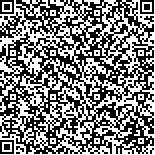下载中心
优秀审稿专家
优秀论文
相关链接
摘要

橡胶林的无序和不合理种植引发了一系列的生态问题,快速监测橡胶林空间分布及动态变化,对橡胶的合理种植、区域生态环境保护以及有关部门的规划决策有重要的指导意义。以MODIS 归一化植被指数NDVI时间序列数据和多时相的Landsat TM数据为基础分析橡胶林的季相和光谱特征,确定橡胶识别的关键时期和特征参数,构建面向对象的决策树分类模型,开展橡胶信息提取研究。结果表明,多时相的遥感数据可反映橡胶的季相特征,以TM数据为基础计算得到的陆表水分指数LSWI和归一化植被指数NDVI可作为橡胶识别的光谱特征参数,橡胶休眠期是利用遥感方法进行橡胶提取的最佳时期。相比于单时相数据,利用包含橡胶关键物候期的多时相遥感数据能得到更高的橡胶林提取精度。
关键词:
橡胶 多时相影像 决策树 面向对象 陆表水分指数LSWI 归一化植被指数NDVIRubber plantations are expanding rapidly in the tropical region of China because of their high profitability, while large areas of natural rainforests are deforested and replaced by artificial rubber trees. A series of ecological problems has occurred because of unreasonable and disordered plantation of rubber trees in some areas. Acquiring spatial distribution of rubber plantations rapidly and monitoring their dynamics can contribute to control and manage rubber plantations and to protect the local ecological environment. Remote sensing plays an important role in monitoring the dynamics of land use and cover. However, the high complexity of tropical ecosystems makes it difficult to extract information from a single-temporal image. This study aims to develop a method that extracts information about rubber plantations effectively and to improve classification accuracy of a tropical ecosystem with multi-temporal remote sensing images. Based on Moderate Resolution Imaging Spectroradiometer (MODIS) Normalized Difference Vegetation Index (NDVI) time series data and multi-temporal Landsat TM data, the seasonal characteristics and spectral characteristics of different objects, including rubber plantation, broadleaved evergreen forest, dry land, and paddy field in the study area, are analyzed and compared in this study. A decision tree model that integrates object-oriented technology is developed to extract rubber plantation in Hainan province. The model choose appropriate characteristic parameters and remote sensing data to separate rubber plantation and other land cover types. Rubber plantation demonstrates obvious seasonal characteristics according to time series data. During the dormant period of rubber trees, an obvious difference in spectral characteristics among different land covers is observed. NDVI and Land Surface Water Index (LSWI) can be selected as the two main parameters to distinguish rubber plantation and other land covers in the study area. In addition, remote sensing data in winter are optimal for extracting rubber plantation. Rubber plantation and four other objects are extracted by using the five-level classification decision tree model based on LSWI, NDVI, MNDWI, and slope data. The total accuracy in the study area is 94.5% according to the test result obtained with field observation data. Rubber plantation and broadleaved evergreen forest have a high classification accuracy, whereas dry land has a low classification accuracy. For the rubber plantation, the producer accuracy obtained with two-temporal TM images (February and December) is 96.2%, whereas the results obtained with a single-temporal image are 78.1% (December) and 86.1% (February). Similarly, the user accuracy of rubber plantation obtained with two-temporal images is higher than that obtained with a single-temporal image. The presented decision tree model with multiple temporal images effectively integrates spectral and phonological information on vegetation, and some uncertainties of single temporal image are avoided. The use of this model ensures that rubber plantation can be extracted with high accuracy. The key and premise of this study are to identify the phonological and spectral characteristics of specific vegetation. Moreover, appropriate images that show specific characteristics of object must be available. Furthermore, if additional images in the key phonological phase of vegetation can be acquired, the classification accuracy can be improved further.

